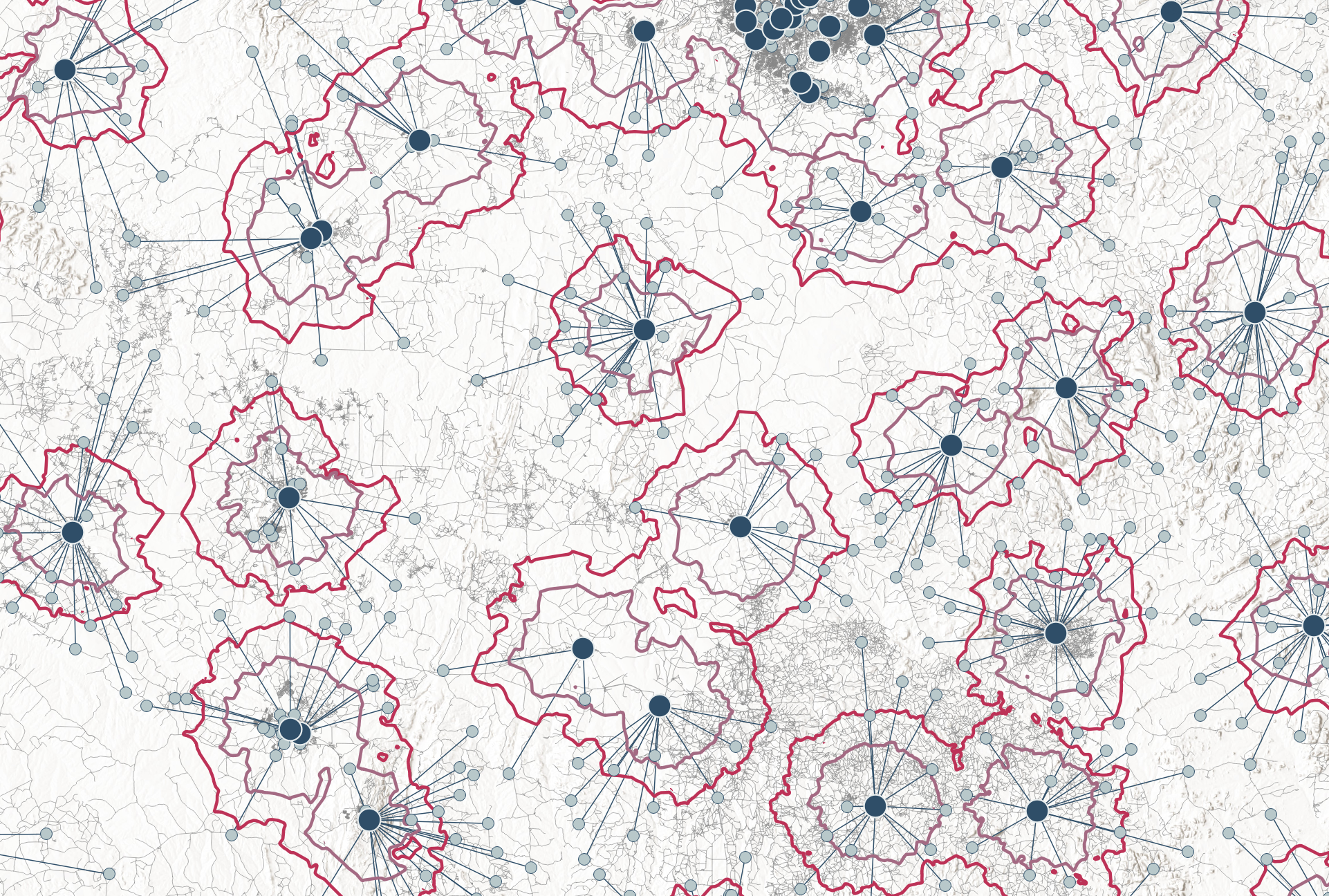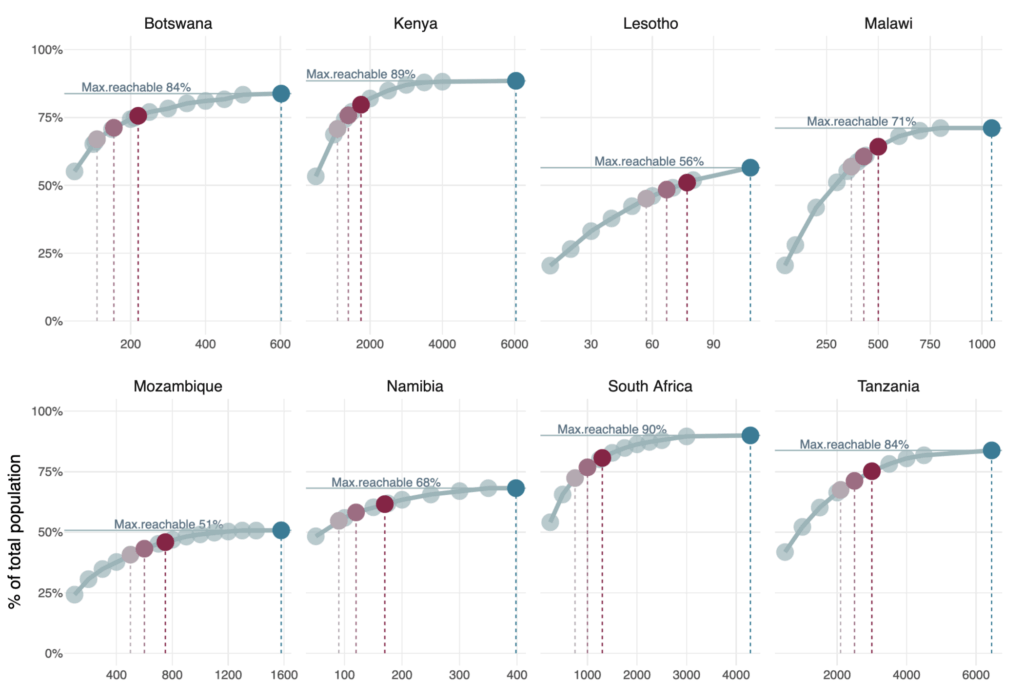Reflections, data stories, and design insights from real-world work in diagnostic network optimization.
These aren’t case studies in the traditional sense – they’re glimpses into how decisions get made, models get challenged, and access gets shaped.
How far is TB testing?
A high-level, multi-country analysis of what it might take to bring TB diagnosis within walk-in distance
15 June 2025
With several new TB diagnostics in the pipeline, expectations are rising that some of those tools will not only be more affordable than current molecular platforms but also more suitable for use at lower tiers of the health system. If these products enter the market with the anticipated features and price points, they could represent a paradigm shift by offering the potential to provide direct, short-distance access to TB testing at a scale that was previously out of reach, considering traditional, molecular TB diagnostic platforms.
This high-level, multi-country analysis offers a first approximation of what it might actually take to bring TB testing within short, walk-in distance for the majority of people.
The limits of distance: Why optimization alone isn’t enough
Insights from a TB diagnostic network optimization
14 April 2025
In public health, health facility planning optimization is often supported by spatial models. These tools offer a way to match services with need, maximize coverage, and allocate limited resources more effectively. But while these models are grounded in data and logic, they still need to be validated against local realities – and that matters.
This article explores the importance of distinguishing between model-generated recommendations and real-world relevance.
The takeaway: optimization can guide decisions, but context must always have the final word.

